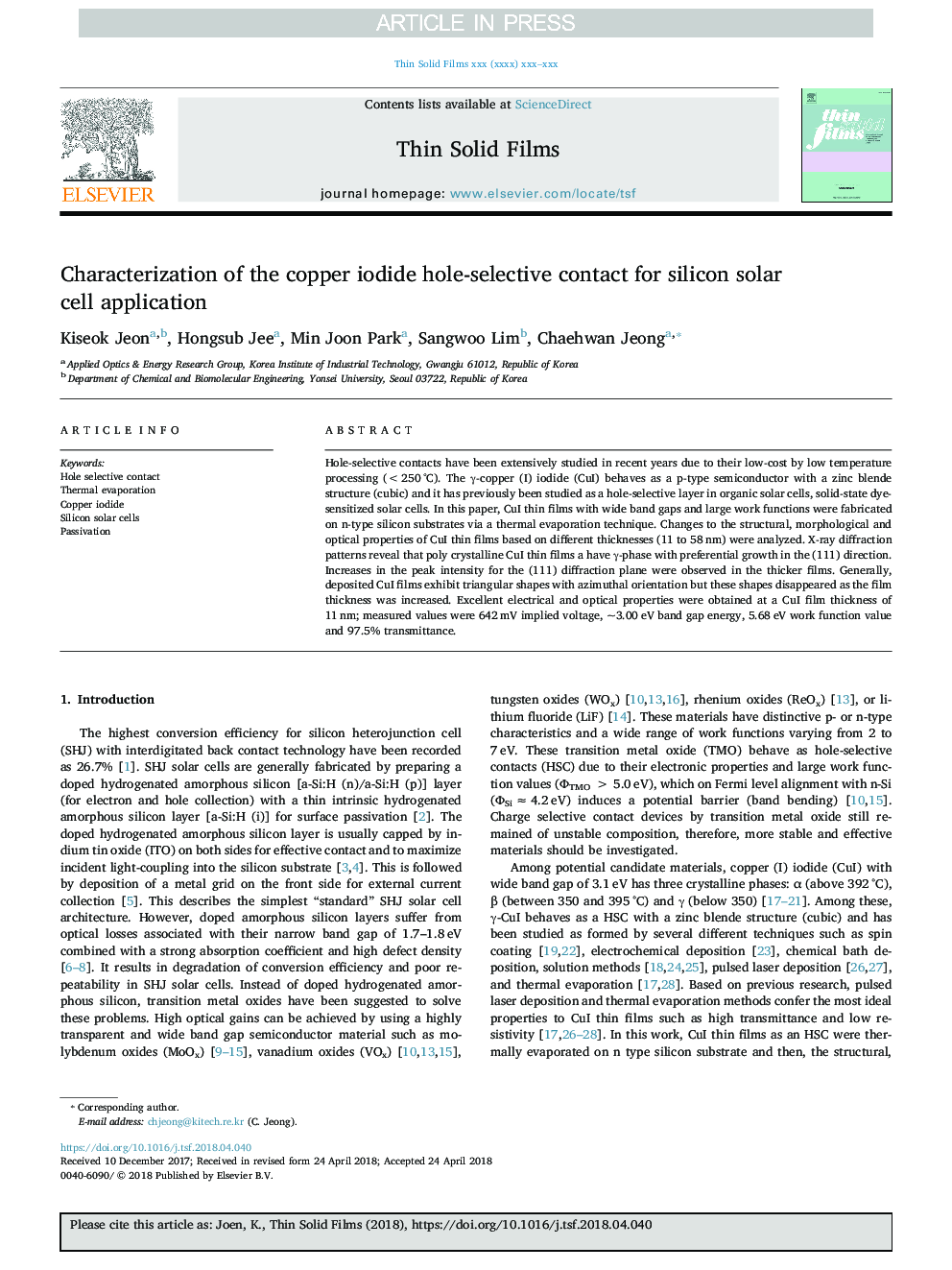| Article ID | Journal | Published Year | Pages | File Type |
|---|---|---|---|---|
| 8032582 | Thin Solid Films | 2018 | 5 Pages |
Abstract
Hole-selective contacts have been extensively studied in recent years due to their low-cost by low temperature processing (<250â¯Â°C). The γ-copper (I) iodide (CuI) behaves as a p-type semiconductor with a zinc blende structure (cubic) and it has previously been studied as a hole-selective layer in organic solar cells, solid-state dye-sensitized solar cells. In this paper, CuI thin films with wide band gaps and large work functions were fabricated on n-type silicon substrates via a thermal evaporation technique. Changes to the structural, morphological and optical properties of CuI thin films based on different thicknesses (11 to 58â¯nm) were analyzed. X-ray diffraction patterns reveal that poly crystalline CuI thin films a have γ-phase with preferential growth in the (111) direction. Increases in the peak intensity for the (111) diffraction plane were observed in the thicker films. Generally, deposited CuI films exhibit triangular shapes with azimuthal orientation but these shapes disappeared as the film thickness was increased. Excellent electrical and optical properties were obtained at a CuI film thickness of 11â¯nm; measured values were 642â¯mV implied voltage, ~3.00â¯eV band gap energy, 5.68â¯eV work function value and 97.5% transmittance.
Related Topics
Physical Sciences and Engineering
Materials Science
Nanotechnology
Authors
Kiseok Jeon, Hongsub Jee, Min Joon Park, Sangwoo Lim, Chaehwan Jeong,
